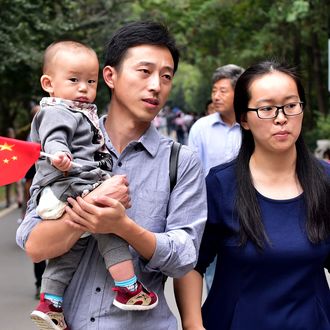
Every couple in China will be allowed to have two children, the nation’s state-run news agency said Thursday morning. The announcement marked the end of the government’s infamous one-child policy, which had been in place for more than three decades.
Introduced in 1979, the policy was adopted out of Malthusian fears that unchecked population growth would lead to economic and environmental catastrophe. But today, it is the effects of this attempt at population control that has China on the verge of economic crisis. China’s working population declined for a third straight year in 2014, falling by 3.7 million to 916 million, according to the Washington Post.
Meanwhile, the United Nations projects that the number of Chinese citizens aged 60 and above will reach 400 million, or one quarter of the population, by the early 2030s. The nation will need to either drastically increase its birthrate or its productivity to support such a large and growing elderly population.
Concerns over this looming crisis led to liberalization of the one-child policy in 2013; couples in which at least one parent was an only child were allowed to have two children.
A Pew poll from 2008 showed broad popular support for the one-child policy within China. But the rule has been widely condemned overseas, out of both humanitarian and religious concerns. Couples who violated the policy were subject to punishments that ranged from fines to forced abortions. Perhaps most concerning, there’s substantial evidence that the policy inspired an epidemic of female infanticide in the country, as parents sought to ensure their one child would be male. Beyond the horror of infanticide itself, this phenomenon has left the country with a stark gender imbalance that leaves many men without the opportunity to start families of their own, increasing the risk of social strife.






























